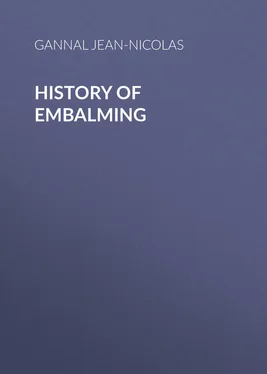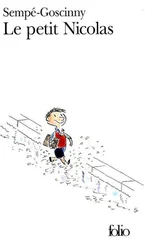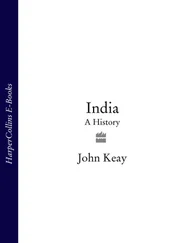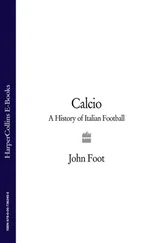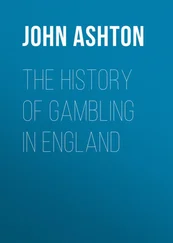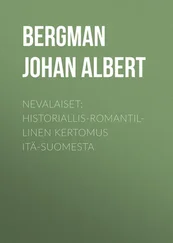Jean-Nicolas Gannal - History of Embalming
Здесь есть возможность читать онлайн «Jean-Nicolas Gannal - History of Embalming» — ознакомительный отрывок электронной книги совершенно бесплатно, а после прочтения отрывка купить полную версию. В некоторых случаях можно слушать аудио, скачать через торрент в формате fb2 и присутствует краткое содержание. Жанр: foreign_antique, foreign_prose, на английском языке. Описание произведения, (предисловие) а так же отзывы посетителей доступны на портале библиотеки ЛибКат.
- Название:History of Embalming
- Автор:
- Жанр:
- Год:неизвестен
- ISBN:нет данных
- Рейтинг книги:5 / 5. Голосов: 1
-
Избранное:Добавить в избранное
- Отзывы:
-
Ваша оценка:
- 100
- 1
- 2
- 3
- 4
- 5
History of Embalming: краткое содержание, описание и аннотация
Предлагаем к чтению аннотацию, описание, краткое содержание или предисловие (зависит от того, что написал сам автор книги «History of Embalming»). Если вы не нашли необходимую информацию о книге — напишите в комментариях, мы постараемся отыскать её.
History of Embalming — читать онлайн ознакомительный отрывок
Ниже представлен текст книги, разбитый по страницам. Система сохранения места последней прочитанной страницы, позволяет с удобством читать онлайн бесплатно книгу «History of Embalming», без необходимости каждый раз заново искать на чём Вы остановились. Поставьте закладку, и сможете в любой момент перейти на страницу, на которой закончили чтение.
Интервал:
Закладка:
The noble sentiments of affection, of respect, and of veneration, had then, without doubt, the priority; and everything proves to us that these inspired the admirable art of embalming, and that they were above all invoked by legislators.
Nature, besides, upon this torrid soil, gave the first idea of this mode of preserving the remains of men and animals: the mummy 2 2 Momie or mumie : the etymology of this word is not well known: the Jesuit Kircher supposes that mum is a Persian word, and Pére Martini, an Arab name, signifying a dried corpse : other writers derive mummy from ammomum , the name of an aromatic plant. These conjectures I leave to the etymologists.
of the sands, a natural phenomenon, was a revelation to a people so wise and industrious. The course of our work will demonstrate, we hope, the simple connection of these facts; it had already arrested M. le Comte de Caylus, who, in a memoir read to the Academy of Inscriptions and Belles-Lettres, in 1749, thus expresses himself: “The Egyptians, according to appearances, owe the idea of their mummies, to the dead bodies which they found buried in the burning sands which prevail in some parts of Egypt, and which, carried away by the winds, bury travellers and preserve their bodies, by consuming the fat and flesh without altering the skin.”
The same opinion is advanced by Rouelle. In our general history of the preservation of the human body, the mummy of the sand, and those induced by other local circumstances, will have the first place; and the art of embalming among the Egyptians and the Guanches will occupy the second. This art, we have already said, presents among these people, a general character, which does not appear in any other country. No where, indeed, are the processes of preservation so efficacious, and these two nations alone, have been able to endow their mummies with the power of resisting destruction.
We shall see in the sequel this custom establish itself among the Jews, the Greeks, the Romans and moderns – but it no longer displays a general character; it is no longer a law, a social institution; religious belief, superstition, personal interest, salubrity, no longer obliged them to recur to it. Sentiments of veneration, respect, and attachment, to which we have given the priority to all others, sufficed to perpetuate this custom, and have preserved it for a long series of ages, from the epoch of the Jews, down to our day.
Joseph commanded the physicians in his service to embalm the body of his father, which they executed according to order, in the space of forty days. – ( Genesis. )
Saint John informs us, that Nicodemus took a hundred pounds of a mixture of myrrh and aloes, with which to embalm the body of Jesus Christ, which they enveloped in sheets with aromatics, according to the usual mode of burying the dead among the Jews.
Testimony of a similar nature, transmitted to us by historians, show us this usage in vigor among the Persians, the Arabians, the Ethiopians, &c.: for kings, princes, and persons of distinction, to whom they would not consider that they had rendered the respect due to their memories if they had failed to preserve preciously what remained of them.
Corippus, in his funeral oration on the Emperor Justinien, thus expresses himself on the embalming of this emperor:
“Thura sabæa cremant, fragrantia mille
Infundunt pateris, et odoro balsama succo, locatis
Centum aliæ species; unguentaque mira feruntur
Tempus in æternum sacrum servantia corpus.” 3 3 They burned the incense of Arabia, balms and perfumes of every kind filled a thousand vases, and the body is for ever preserved from corruption by essences possessing wonderful properties.
The Romans, nevertheless, often contented themselves, in washing and rubbing the body with certain perfumes.
“Tarquinii corpus bona femina lavit et unxit.” 4 4 A benevolent woman washed the body of Tarquin, and rubbed it with perfumes.
The Egyptian mummies, which are distinguished from those of other nations by the admirable state of preservation in which we find them at the present time, have been for the philosopher a subject of interesting study and research, – for the ignorant, a cause of astonishment and superstitious fear; for physicians, an empyrical remedy for a long time in vogue. The history of Razevil, the Pole, proves the evil influence attributed to mummies. He had purchased at Alexandria, two Egyptian mummies, one of a man, the other of a woman, in order to take them to Europe; he divided them into six pieces, which he separately enclosed in as many boxes, made of the bark of dried trees, and in a seventh box he placed idols discovered with the two bodies. But, as the Turks forbid the sale and transport of these mummies, fearing lest Christians might compose some sorcery of them to the injury of their nation, the Polonaise concluded to bribe the Jew commissioned to examine the bales and merchandise. The plan succeeded, the Jew shipped all the cases as shells, to be transported to Europe. Previous to setting sail, I found, says he, a priest returning from Jerusalem, and who could not accomplish his voyage without the aid which I gave him on this occasion, in inviting him to take passage in our ship. One day, whilst this good man was occupied in counting his breviary, there arose a furious tempest, and he warned us, that besides the danger, he perceived two great obstacles to our voyage in two spectres, which continually haunted him: the tempest over, I taunted him as a visionary, because I never imagined that my mummies could have been the cause of it. But I was obliged in the sequel to change my opinion, when there happened another storm, more violent and dangerous than the first, and when the spectres again appeared to our priest whilst he was saying his prayers, under the figures of a man and woman dressed as my mummies were.
When the tempest was partially appeased, I privately threw overboard the seven boxes, which was not so adroitly executed, however, but that the captain got notice of it, when, with great delight, he promised us that we should have no more storms; which effectively happened, and the good priest was troubled with no more visions. I had a severe reprimand from the captain for having embarked these mummies in his vessel, against which the sea had so great antipathy. The theologians of the isle of Crete, where we anchored, justified my conduct, acknowledging that it was lawful to Christians to transport these mummies for the assistance of the infirm, and that the church did not forbid the usage.
The judgment of the theologians of the isle of Crete, proves that the employment of the mummy as a medicine was universally admitted. According to Dioscorides, it is heating and drying in the second degree – it relieves the headach, cures megraim, palsy, and epilepsy – wonderful in relieving vertigo and drowsiness – an antidote against poisons of all kinds – the bite of venomous beasts – useful, according to Rhasis, in the spitting of blood, rupture of blood-vessels, wounds, &c.; – in one word, no remedy was esteemed more efficacious for the human body, than the human body taken as a medicine. One dram of the oil of mummy of Paracelsus, rendered all poisons innocuous for twenty-four hours; the formulæ of Crollius, of Fernel, of Clauderus, produced effects equally miraculous. The divine water of Scroder , was the touch-stone by whose aid the issue of a disorder could be known in advance: a dram of this liquor was mixed with nine drops of the blood of the patient, or with a double proportion of his urine; if these fluids did not mix, it was an infallible sign of approaching death; on the other hand, if they mixed readily, you might anticipate the health or cure of the patient in twenty-four hours. The great king, Francis 1st, wore around his neck a piece of mummy as a preservative against all evils. Powerless preservative!
Читать дальшеИнтервал:
Закладка:
Похожие книги на «History of Embalming»
Представляем Вашему вниманию похожие книги на «History of Embalming» списком для выбора. Мы отобрали схожую по названию и смыслу литературу в надежде предоставить читателям больше вариантов отыскать новые, интересные, ещё непрочитанные произведения.
Обсуждение, отзывы о книге «History of Embalming» и просто собственные мнения читателей. Оставьте ваши комментарии, напишите, что Вы думаете о произведении, его смысле или главных героях. Укажите что конкретно понравилось, а что нет, и почему Вы так считаете.
